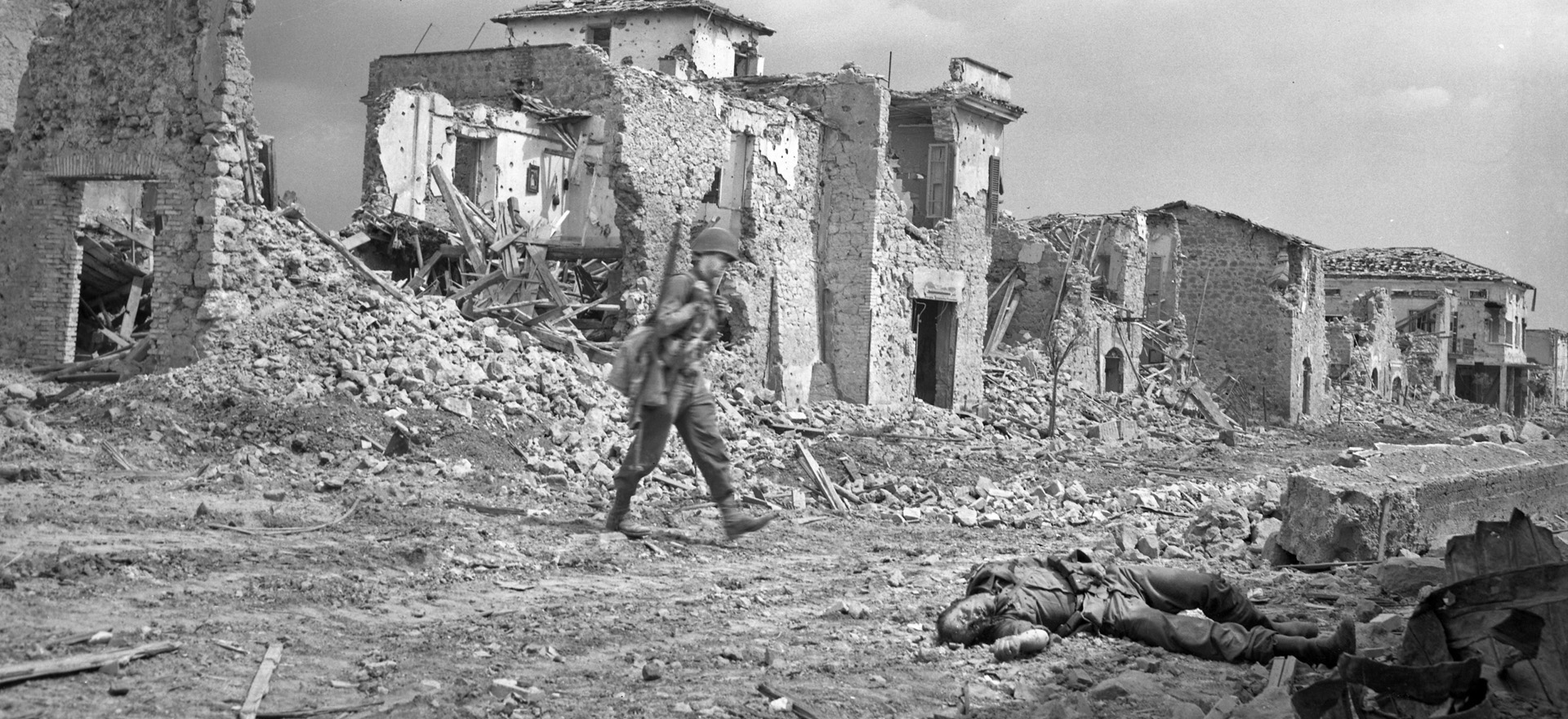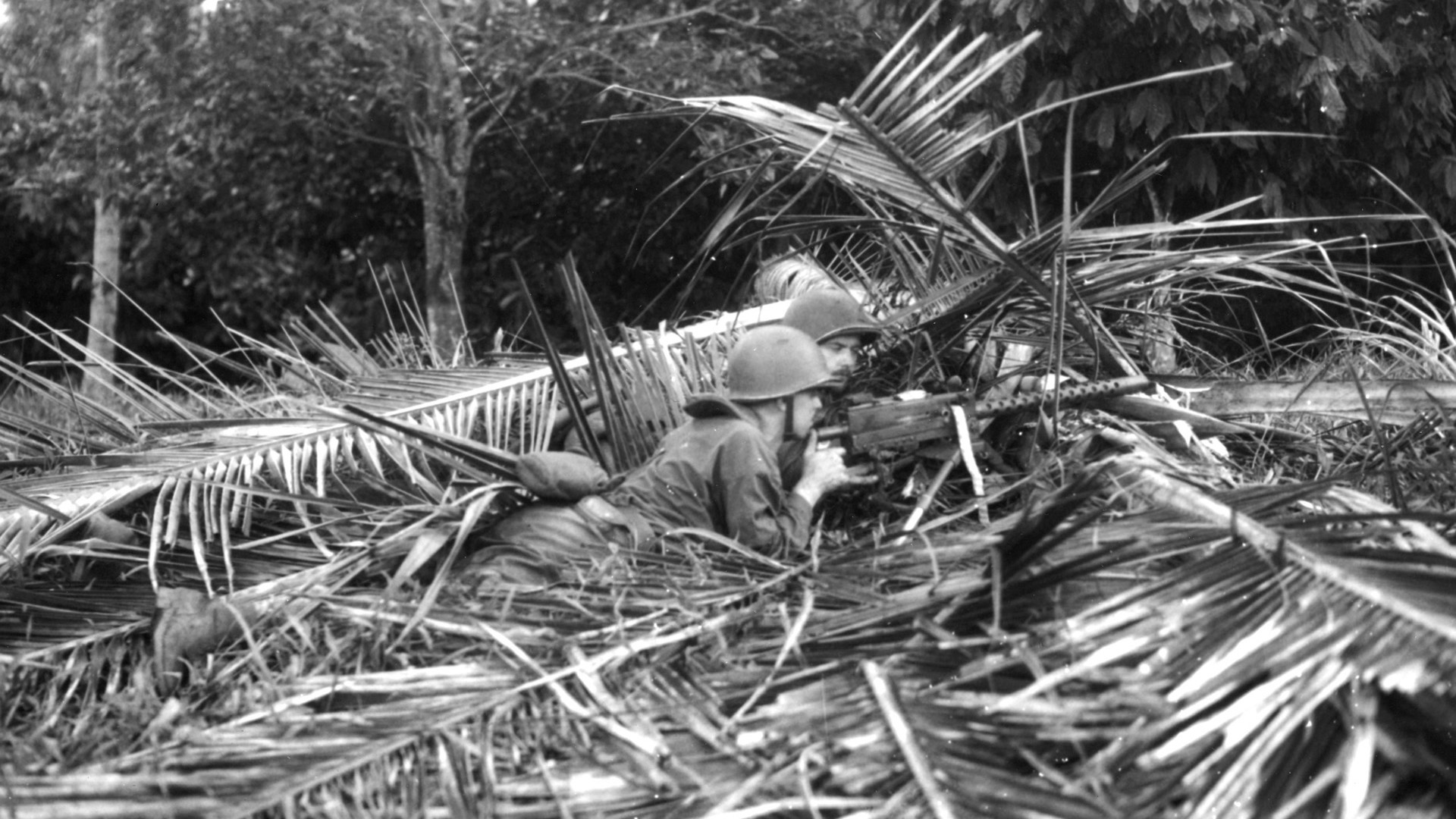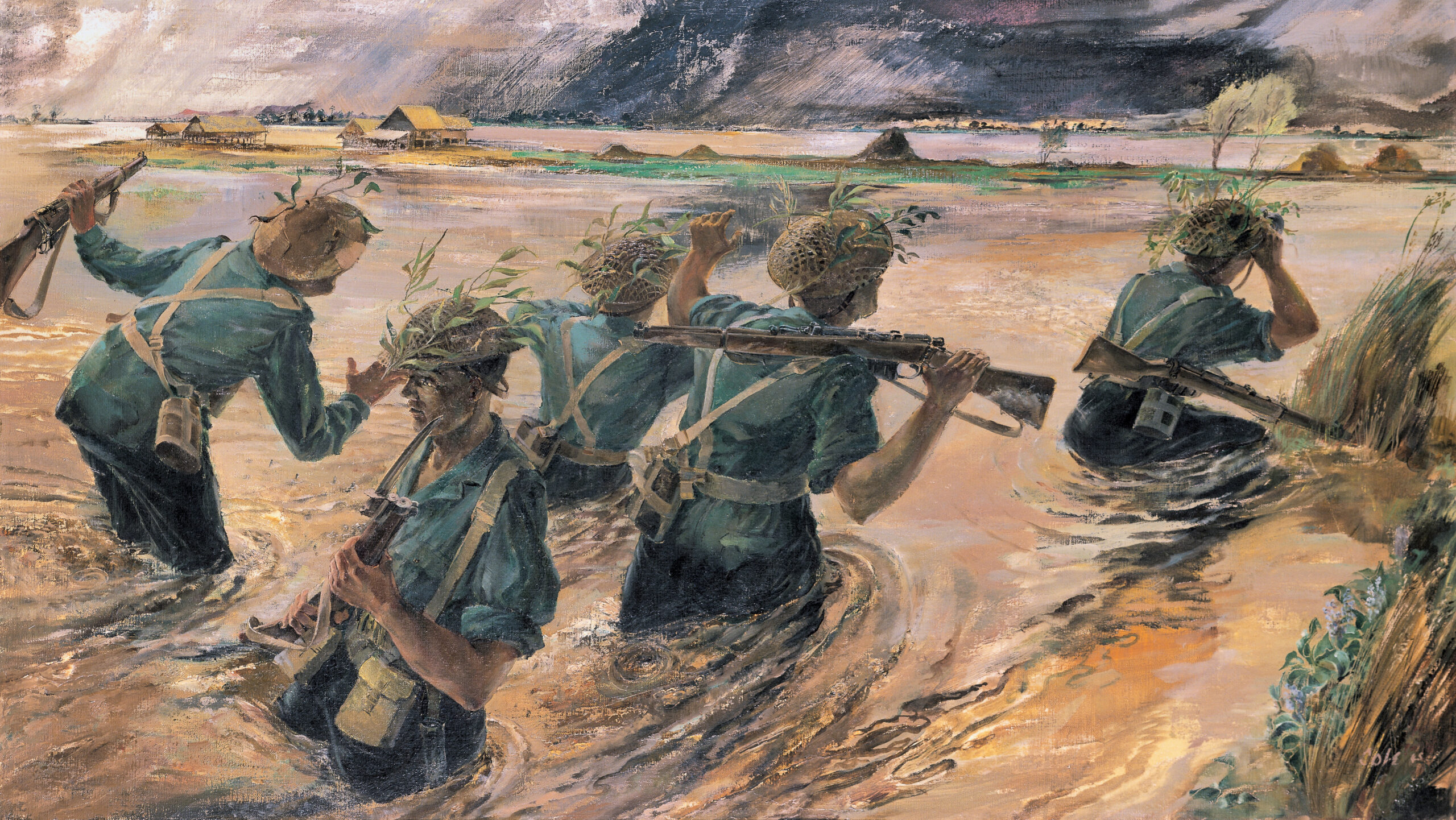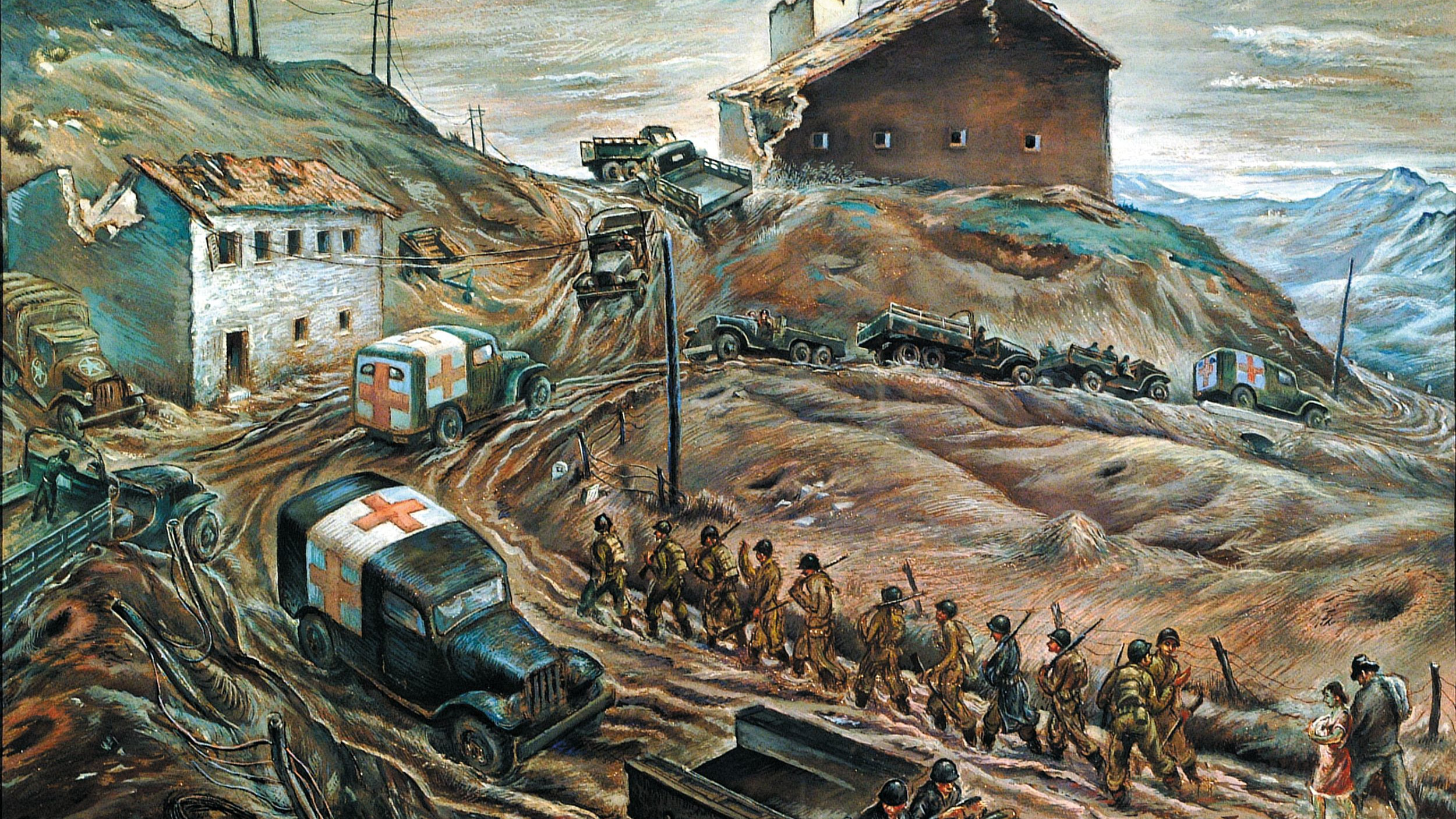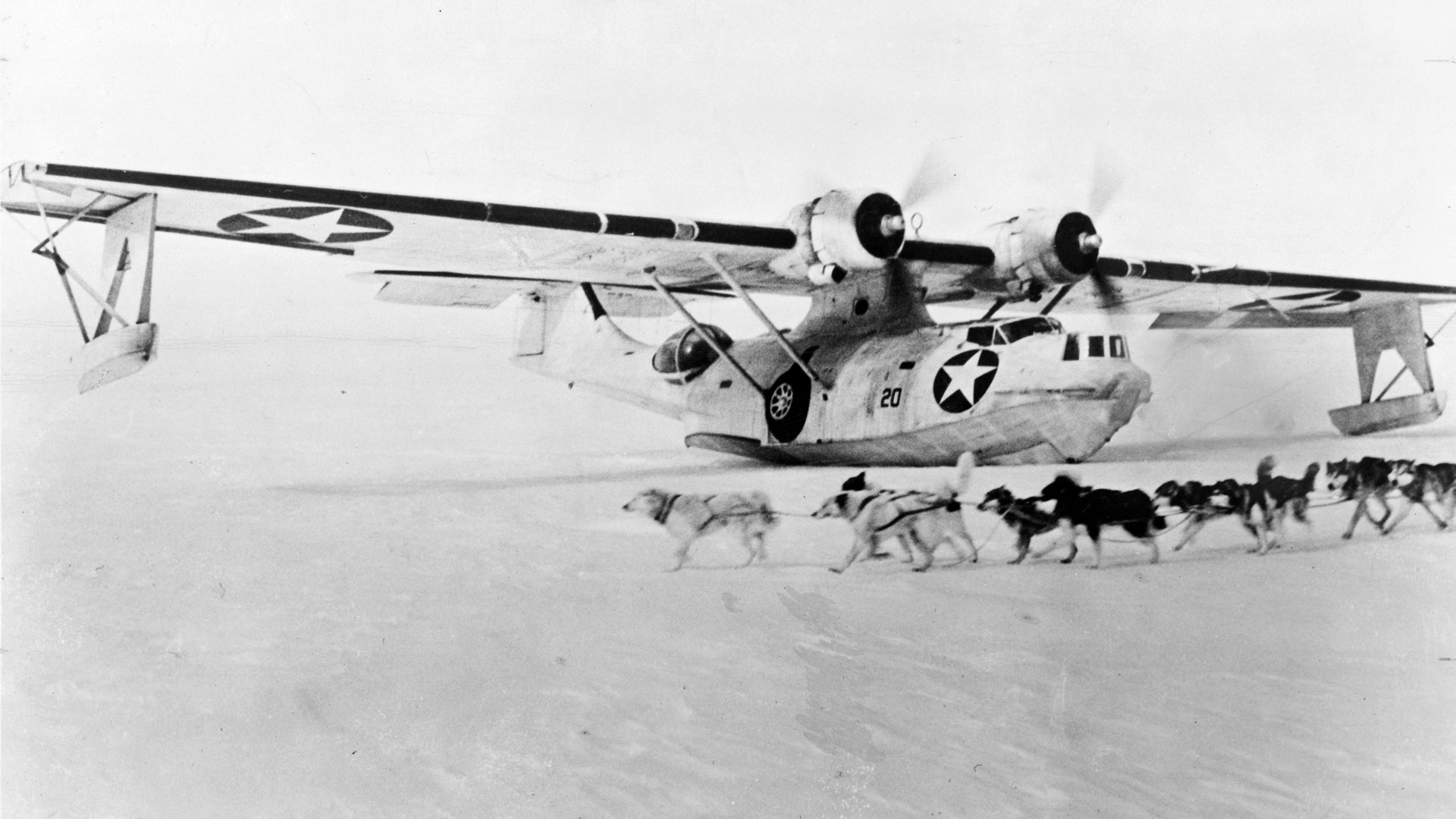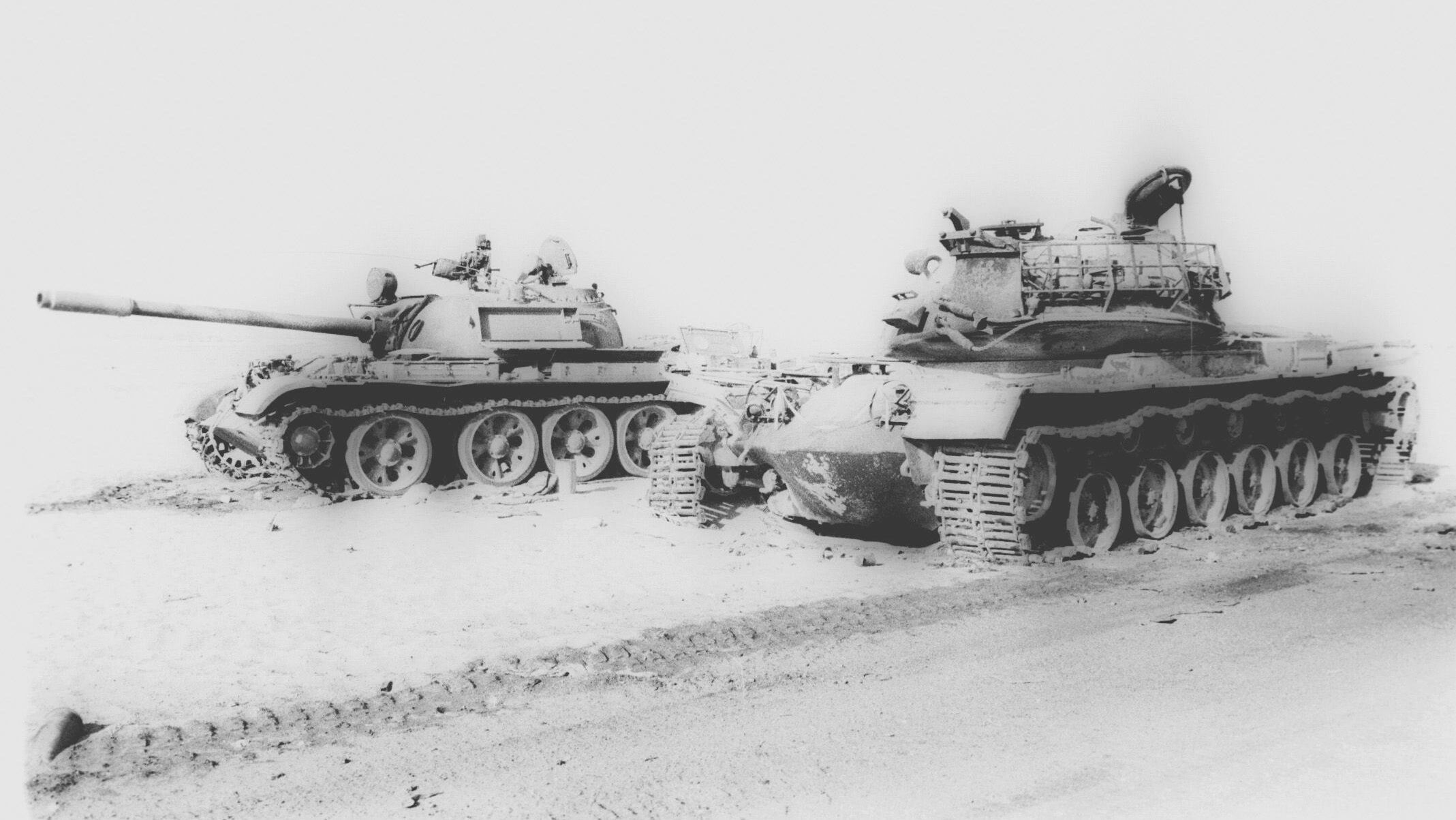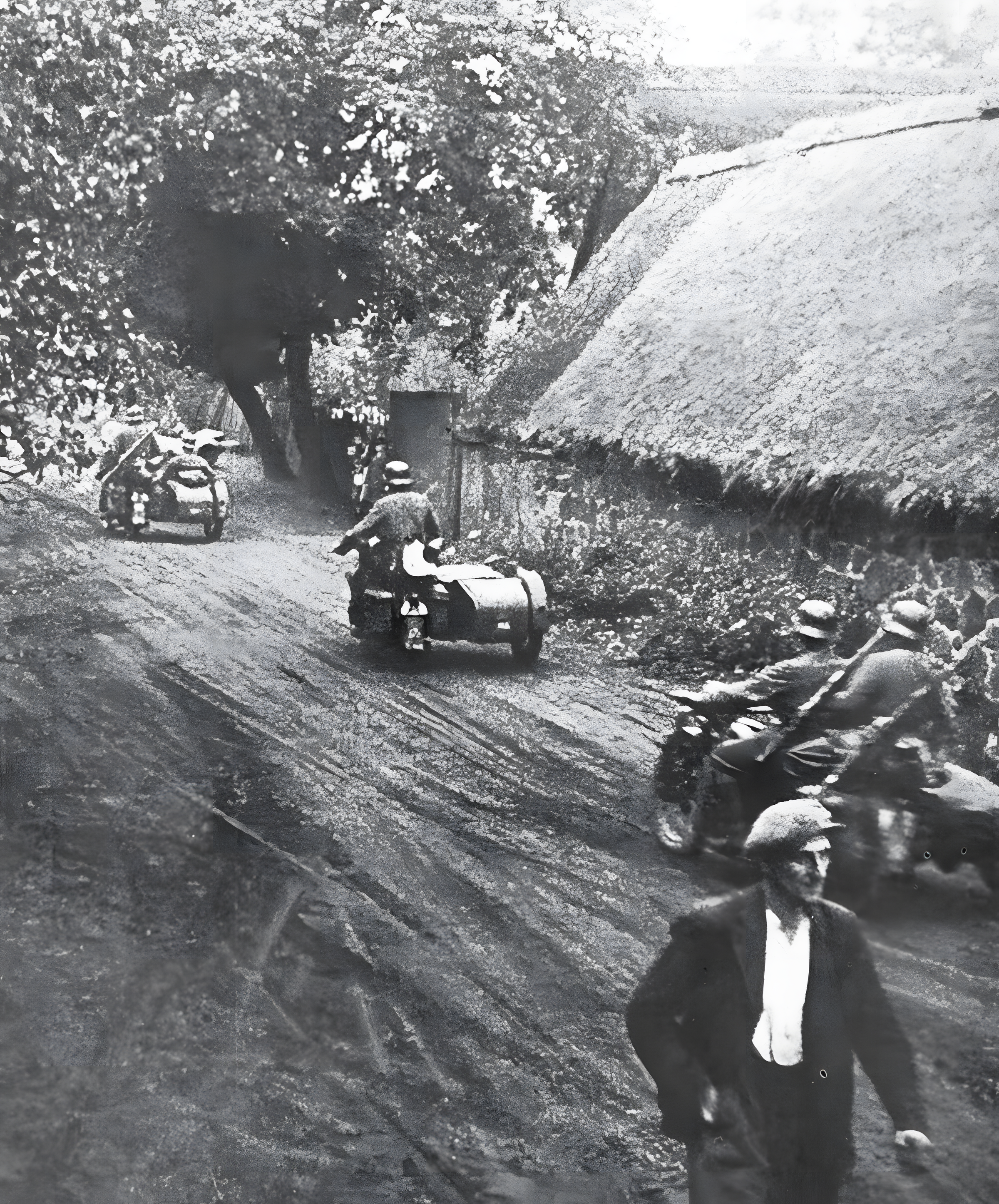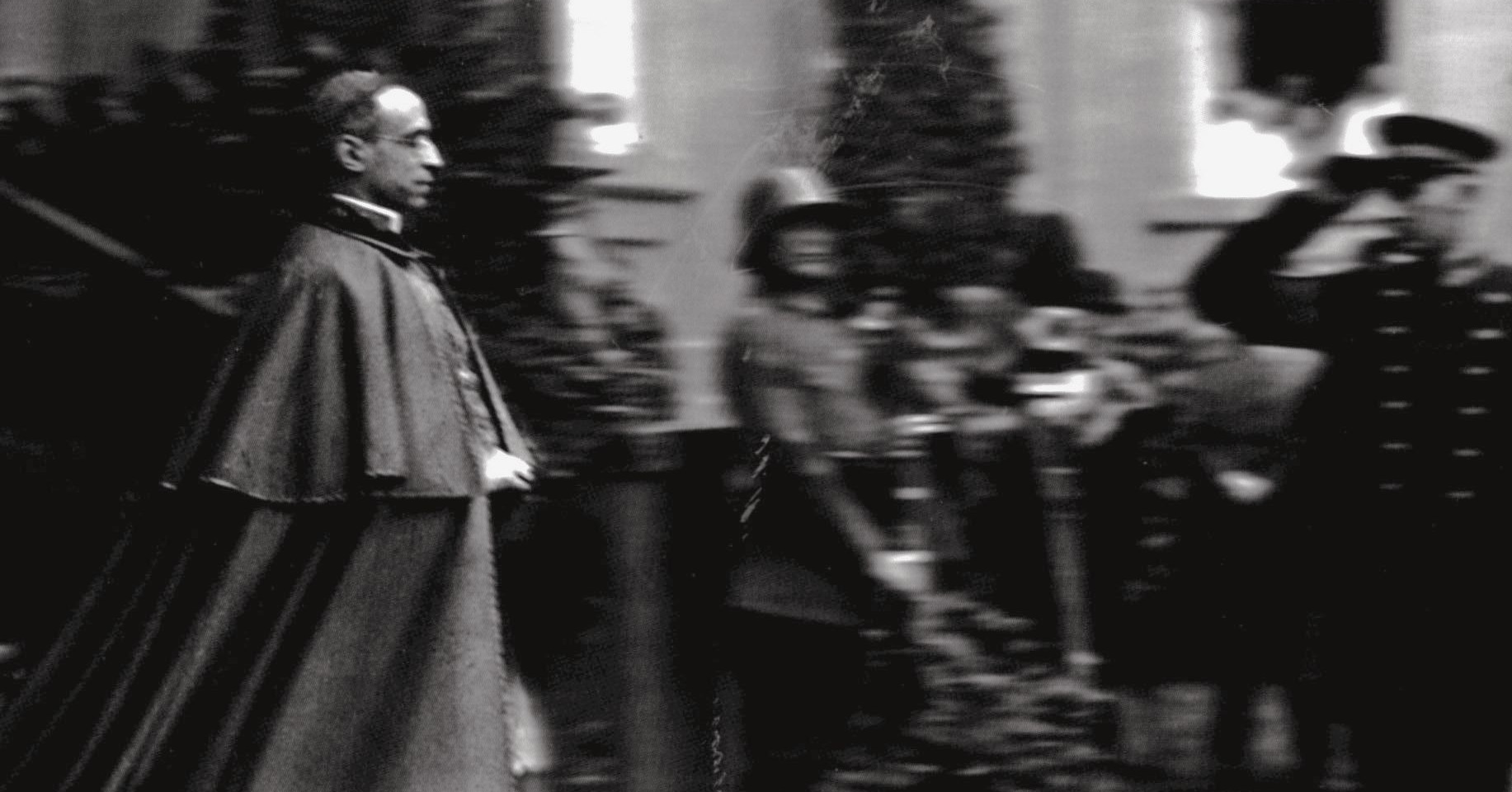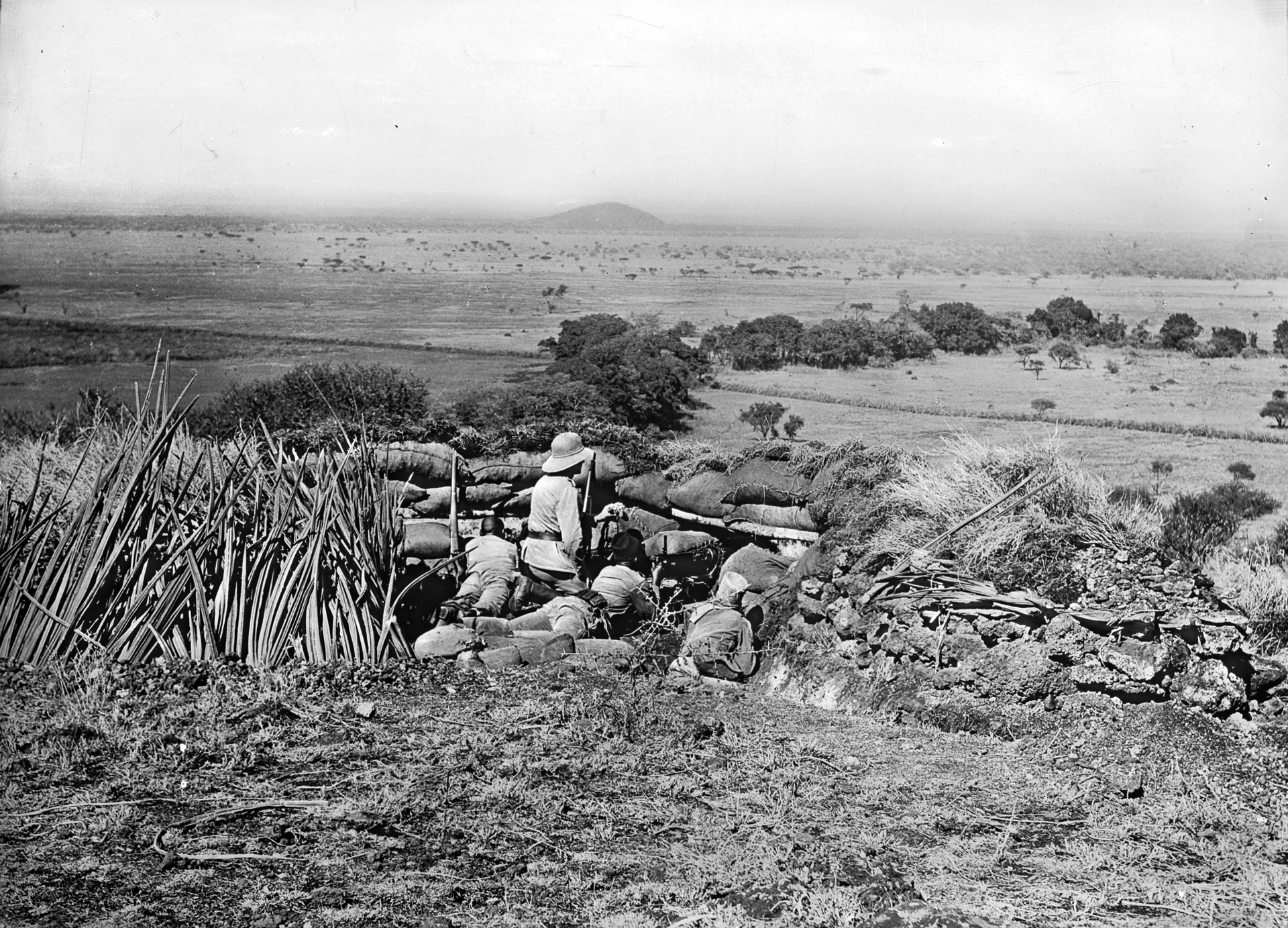By Christopher Miskimon
The morning of February 16, 1944, dawned foggy over the Via Anziate near Anzio, Italy. The 45th Infantry Division’s 2nd Battalion, 157th Infantry Regiment had advanced overnight to take positions on the west side of the roadway, assuming its place on the front lines. Company E, commanded by Captain Felix Sparks, was assigned to one end of the battalion’s line, where it bordered the division’s 179th Regiment. Looking out across the ground in front of his position, Sparks saw overcoat-clad figures moving but could not tell who they were. He called his higher headquarters and asked if the soldiers of the 179th had overcoats. Told they did not, Sparks realized the advancing men were Germans. It wasn’t long before enemy artillery began to pound Company E’s foxholes. Shells crashed around them for 10 minutes, but the troops were well dug in so casualties were light.
When the barrage lifted, three German tanks, unsupported by infantry, came forward and attacked. “They made a mistake,” Sparks said. Company E had an antitank gun and two M-10 tank destroyers supporting it. They opened fire at Sparks’ order and quickly destroyed two of the tanks, while the third made a fast retreat. Within a few minutes, however, German infantry attacked again, shouting and screaming as though drunk. Sparks’ men shot them down. “We killed every damn one of them,” he later recalled. The sound of firing could be heard coming from the 179th’s lines; the enemy was attacking there as well.
 Only a half hour passed before the third German wave came crashing at E Company. This time, the infantry came with armored support. “That’s what killed us,” Sparks said, referring to the mutual support of tanks and infantry. The panzers moved up to point-blank range and opened fire. The fighting was intense; soon even more German troops were sent against Sparks’ men. As the company fought to hold back the enemy assault, Sparks saw a crewman from one of the tank destroyers climb atop the vehicle and man its .50-caliber machine gun, exposing himself to enemy fire. He stopped part of the German attack but was killed by a burst. Sparks did not even know the soldier’s name.
Only a half hour passed before the third German wave came crashing at E Company. This time, the infantry came with armored support. “That’s what killed us,” Sparks said, referring to the mutual support of tanks and infantry. The panzers moved up to point-blank range and opened fire. The fighting was intense; soon even more German troops were sent against Sparks’ men. As the company fought to hold back the enemy assault, Sparks saw a crewman from one of the tank destroyers climb atop the vehicle and man its .50-caliber machine gun, exposing himself to enemy fire. He stopped part of the German attack but was killed by a burst. Sparks did not even know the soldier’s name.
At midday, as the fight raged on, Sparks sent away his sole remaining tank destroyer, its ammunition depleted. It left at full speed with the Germans firing at it the entire way; Sparks watched rounds impact just behind it as it moved. Shortly afterward, yet another wave of Germans attacked. This time, Sparks saw only one way to stop the assault. He called in artillery on his own position, a tactic only used as a last resort to avoid overrun and defeat. E Company’s troops were still in their foxholes, while the Germans advanced in the open. The German attack was finally stopped, though only for the moment.
The onslaught was not yet over; the heavy fighting and bloodshed went on for days until the Nazi offensive was finally exhausted. Even then, the campaign ground on in an extended battle of attrition and willpower until the Allies were ready to finally take the offensive, break out of the perimeter, and begin their journey toward Rome. It was a harrowing and dramatic time, a story of courage under pressure for both sides. The story is expertly told in Desperate Valour: Triumph at Anzio (Flint Whitlock, Da Capo Press, Boston, MA, 2018, 496 pp., maps, photographs, bibliography, index, $35.00, hardcover).
The author is an acknowledged master of telling battle stories from the foxhole level, and that skill shows through in his latest book. The story of Anzio is told through the eyes and words of the participants, showing how they perceived the wide-ranging events of the fighting at their level and in their place and time. The author skillfully weaves these various narratives together into a coherent and engaging narrative, giving the reader an explanation of how thousands of Allied soldiers worked together to defeat their opponents and take the offensive, pushing the war along toward its final, dreadful conclusion. This includes accounts by participants such as Audie Murphy and James Arness, in later years the star of Gunsmoke. Many books have been written about Anzio; this one stands out through its detailed perspective, thorough research, and clear prose.
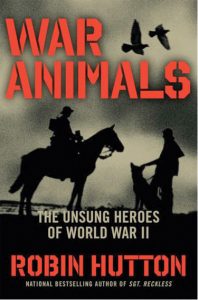 War Animals: The Unsung Heroes of World War II (Robin Hutton, Regnery Press, Washington, D.C., 2018, 466 pp., photographs, appendix, bibliography, notes, index, $29.99, hardcover)
War Animals: The Unsung Heroes of World War II (Robin Hutton, Regnery Press, Washington, D.C., 2018, 466 pp., photographs, appendix, bibliography, notes, index, $29.99, hardcover)
Chips was a mutt, a mix of Collie, German Shepherd, and Husky. He was also the most decorated canine of World War II. He was donated to the Army by a family in Pleasantville, New York, trained, and paired with a handler named John Rowell. Chips went ashore during Operation Torch, the invasion of French North Africa, and faced artillery fire. During the invasion of Sicily in 1943, the dog attacked a machine-gun nest, tearing at the throat of an Italian soldier who quickly surrendered. For this and other brave acts he was awarded the Distinguished Service Cross. Other awards followed, including a Silver Star and a recommendation for the Purple Heart. Later, however, these awards were revoked through the efforts of those who thought animals should not receive awards. Chips survived the war and went home to Pleasantville and his family, where he was recognized as a hero but soon became a beloved pet once more.
The tale of Chips is but one of many in this new work, which tells the stories of various animals who served in a military capacity during the war. They are entertaining and often harrowing, as the animals were exposed to the same dangers as their human handlers. The book is written in a clear, simple narrative, which successfully conveys these simple accounts to the reader.
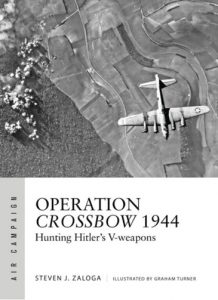 Operation Columbia—The Secret Pigeon Service: The Untold Story of World War II Resistance in Europe (Gordon Corera, William Morrow, New York, photographs, index, $28.99, hardcover)
Operation Columbia—The Secret Pigeon Service: The Untold Story of World War II Resistance in Europe (Gordon Corera, William Morrow, New York, photographs, index, $28.99, hardcover)
During World War II the British intelligence services dropped more than 16,000 homing pigeons across Nazi-occupied Europe from Denmark to southern France. All of this was carried out under the operational name Columba. Resistance fighters wrote messages on small pieces of rice paper, secured them in tiny canisters tied to the pigeons’ legs, and set them aloft to return to Britain. The messages contained reports on troop movements, radar stations, and defenses— when they held anything useful at all. Sometimes the information was so useful British intelligence would parachute agents in to assist the relatively amateur resistance operatives.
The author carried out extensive research paired with declassified documentation to create this revealing tale of intelligence and resistance at work during the war. It is a dramatic human story of bravery under enemy occupation painstakingly pieced together. The result is an in-depth look at one of the lesser known episodes of the espionage war in Europe.
 The Desert VCs: Extraordinary Valour in the North African Campaign in WWII (Brian Best, Frontline Books, Barnsley, UK, 2018, 216 pp., photographs, bibliography, index, $34.95, softcover)
The Desert VCs: Extraordinary Valour in the North African Campaign in WWII (Brian Best, Frontline Books, Barnsley, UK, 2018, 216 pp., photographs, bibliography, index, $34.95, softcover)
On April 13, 1941, Corporal John Hearst Edmondson of D Company, 2/17 Battalion, Australian Imperial Force was with his comrades in the thin perimeter around Tobruk in eastern Libya. Ahead of his a platoon a group of Germans were infiltrating the Australian line, carrying machine guns and mortars. The platoon commander, Lieutenant Mackell, decided to break up the enemy formation, and the Aussies charged into them, firing and throwing grenades as they went. Edmondson was hit in the stomach and neck but kept going, killing one German and engaging another. Suddenly, the lieutenant called out for help, beset by two enemy soldiers. Edmondson bayoneted both of them and saved his officer. The enemy retreated, leaving a dozen dead behind. The attack was defeated, but Edmondson was mortally wounded, dying the next morning. For his heroism he was posthumously awarded the Victoria Cross. He was the first Australian to receive the award during the war.
This account is but one of many in this new book relaying the stories of those who earned the Victoria Cross over the course of World War II. Included are chapters on the fighting in East Africa, Greece, and Syria along with a chapter on five submariners who received the Victoria Cross while fighting at sea. The work is full of well-written accounts of heroism in one of the war’s earliest theaters.
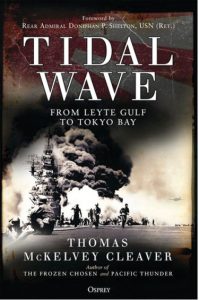 Tidal Wave: From Leyte Gulf to Tokyo Bay (Thomas McKelvey Cleaver, Osprey Publishing, Oxford, UK, 2018, 320 pp., maps, photographs, bibliography, index, $32.00, hardcover)
Tidal Wave: From Leyte Gulf to Tokyo Bay (Thomas McKelvey Cleaver, Osprey Publishing, Oxford, UK, 2018, 320 pp., maps, photographs, bibliography, index, $32.00, hardcover)
The last year of the war in the Pacific was the hardest fought and most difficult. Considering how difficult and brutal this theater of war was, such a statement is significant. Despite the hardships, the U.S. Navy won many overwhelming victories during this period, around the Philippine Islands and elsewhere. Any other enemy would likely have given up after receiving such hammer blows to its fleet and land forces, but Imperial Japan was not a typical enemy. The Japanese were determined and implacable, even in the face of certain defeat. So they desperately fought on despite being gradually ground under by the Allied superiority at sea and in the air. It was a war unlike any that had come before it and has not been seen since.
In this book the author offers his analysis of the strategic and political situations during the last year of the war. He deftly combines this high-level approach with vignettes of aerial combat, severe typhoons, and deadly kamikaze raids, showing how the fighting challenged the sailors of the U.S. Navy just as the Japanese were pushed to fight ever more urgently. Further, he points out how the U.S. Navy had been designed decades before to take on the Japanese and ultimately succeed at its task. This work is a tribute to the sailors who kept pushing forward to final victory despite the high cost in lives.
 Valley of the Shadow: An Account of American POWs of the Japanese (Colonel Nicoll F. Galbraith, Xlibris, 2018, 546 pp., photographs, appendices, $23.79, softcover)
Valley of the Shadow: An Account of American POWs of the Japanese (Colonel Nicoll F. Galbraith, Xlibris, 2018, 546 pp., photographs, appendices, $23.79, softcover)
Colonel Nicoll “Nick” Galbraith was in the Philippines when World War II began. He was a staff officer serving General Jonathan M. Wainwright. When the American forces surrendered to the invading Japanese in early 1942, Nick became a prisoner of war and would spend the next four years as a captive until he and his comrades were rescued by a six-man OSS team, which parachuted into their POW camp in northern China. It was a harrowing and trying experience fraught with hardship, mistreatment, and hunger. At the same time there was courage, sacrifice, and fellowship.
This work was written by Colonel Galbraith in the years after his liberation. While partially fictionalized, it was created using the extensive notes he kept while a prisoner, written on whatever notebooks or paper he could scrounge. He risked punishment or even death if these notes were found. Still, his writings allowed him to put together this fascinating account of life as a prisoner of Imperial Japan. The narrative flows easily, and the reader is kept enthralled by the day-to-day struggle for both survival and sanity.
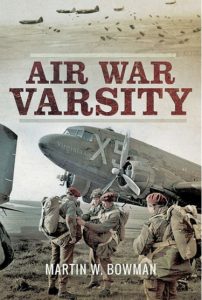 Air War Varsity (Martin W. Bowman, Pen and Sword Books, S. Yorkshire, UK, 2018, 256 pp., maps, photographs, appendix, notes, index, $39.95, hardcover)
Air War Varsity (Martin W. Bowman, Pen and Sword Books, S. Yorkshire, UK, 2018, 256 pp., maps, photographs, appendix, notes, index, $39.95, hardcover)
Operation Varsity took place on March 24, 1945, and was the last large-scale Allied airborne operation of World War II. It was part of a larger operation involving amphibious attacks by British Second Army. More than 1,500 troop-carrier aircraft and 1,350 gliders were involved in the drop with an air attack by some 10,000 combat aircraft against German airfields and transportation networks. The British 6th Airborne and American 17th Airborne Divisions were dropped in a single day north and northwest of the German city of Wesel on the east bank of the Rhine. The Germans, through intelligence analysis, expected an attack in the area, knowing the Allies would not want their paratroopers too far from the advancing ground troops. While Varsity was a success, it was not a walkover and hard fighting ensued.
The author is an acknowledged expert on aviation history, and his expertise shines through in the extensive detail that fills this new book. Attention is given to the operations before Varsity, which influenced how it was conducted. The volume is full of firsthand accounts, which speak to the drama of the operation. Air operations are also given thorough attention alongside the airborne troops. There are also a large number of photographs, some of them never before published, that highlight the actions described in the narrative.
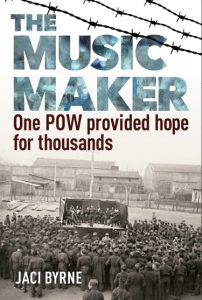 The Music Maker: One POW Provided Hope for Thousands (Jaci Byrne, Big Sky Publishing, Newport, NSW, Australia, 2018, 268 pp., photographs, $34.99, softcover)
The Music Maker: One POW Provided Hope for Thousands (Jaci Byrne, Big Sky Publishing, Newport, NSW, Australia, 2018, 268 pp., photographs, $34.99, softcover)
Drum Major Henry Barnes Jackson was a musician in the British Army’s 5th Battalion, the Border Regiment. He began World War II with them, his unit sent to France to fight the Nazis. He was captured on May 29, 1940, and spent the rest of the war as a German prisoner. During his captivity he used his musical talents to entertain his fellow captives and keep himself occupied and sane. On the last day of the war in Europe, he was liberated by American troops after enduring a forced march by his captors. The only possession he had left was his diary, meticulously kept during his imprisonment. Henry was 46 years old at the time.
Henry’s fascinating diary is now available for the reading public with the release of this book, organized and compiled by his granddaughter. It shows how one man, humble and unassuming, could use his talents to overcome extreme adversity and brutal treatment. The book also contains a number of Henry’s personal photographs, adding a visual record to the reader’s experience. It also enlightens the reader by showing how the war appeared from within the confines of a prison camp’s barbed wire.
 Operation Crossbow 1944: Hunting Hitler’s V-Weapons (Steven J. Zaloga, Osprey Publishing, Oxford, UK, 2018, maps, photographs, bibliography, index, $20.00, softcover)
Operation Crossbow 1944: Hunting Hitler’s V-Weapons (Steven J. Zaloga, Osprey Publishing, Oxford, UK, 2018, maps, photographs, bibliography, index, $20.00, softcover)
By late 1943, the Allies were noticing new construction along the English Channel coast; the Germans were up to something. These massive new creations were launch sites for the Third Reich’s newest weapons, the V-1”buzz bomb” and V-2 ballistic missile. Soon these “vengeance” weapons would rain down upon civilian population centers such as London. While the weapons could do little to affect the overall course of the war, they were killing noncombatants. A campaign was begun to destroy these sites, particularly the ski-ramped launching sites for the more numerous V-1s. It included British Avro Lancaster bombers armed with enormous Tallboy bombs using newly developed radar guidance methods. The Americans brought in their own high technology, packing worn-out but still flyable Boeing B-17 bombers with explosives and flying them into targets by radio control. Conventional aircraft were also extensively used. The V-weapons ultimately failed to influence the war, but they were the harbingers of the guided missiles of the nuclear age.
The efforts to hunt down the V-weapons and their launch sites are well covered in this new work, part of Osprey’s new Air Campaign series. The detailed text is accompanied by numerous images and original artwork, which bring life to the subject. Maps and charts help explain how the various missions were planned and carried out along with their results. This is an excellent resource on one of the war’s lesser known air campaigns.
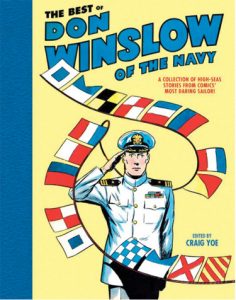 New and Noteworthy
New and Noteworthy
The Best of Don Winslow of the Navy: A Collection of High-Seas Stories from Comic’s Most Daring Sailor! Edited by Craig Yoe, Naval Institute Press, 2018, $$29.95, hardcover) This comic strip was popular during and immediately after World War II. The best stories of the series are compiled here.
Attack on the Scheldt: The Struggle for Antwerp 1944 (Graham Thomas, Pen and Sword Books, 2018, $39.95, hardcover) The fighting for the region around Antwerp was among the most difficult of the war. This full-length study brings the action into full light.
A French GI at Omaha Beach (Caroline Jolivet, Pen and Sword Books, 2018, $34.95, hardcover) Bernard Dargols was a young student in New York when the war began. He joined the U.S. Army to help liberate his country.
The Spy Toolkit: Extraordinary Inventions from World War II (Stephen Twigge, Osprey Publishing, 2018, $15.00, hardcover) This book reveals the various tools, weapons, and methods used by Allied intelligence to conduct its war of espionage. It is well illustrated.
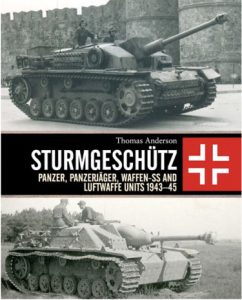 Sturmgeschutz: Panzer, Panzerjager, Waffen-SS and Luftwaffe Units 1943-45 (Thomas Anderson, Osprey Publishing, 2018, $45.00, hardcover) Sturmgeschutz assault guns were widely used with great success by the German forces. This book recounts their design, production, and use.
Sturmgeschutz: Panzer, Panzerjager, Waffen-SS and Luftwaffe Units 1943-45 (Thomas Anderson, Osprey Publishing, 2018, $45.00, hardcover) Sturmgeschutz assault guns were widely used with great success by the German forces. This book recounts their design, production, and use.
Atlas of the European Campaign 1944-45 (Steven Zaloga, Osprey Publishing, 2018, $60.00, hardcover with case) This detailed work contains maps of the major actions of the European Theater along with brief text explain the events of the fighting.
The Death of Hitler: The Final Word (Jean-Christophe Brisard and Lana Parshina, Da Capo Press, 2018, $29.00, hardcover) The authors have compiled new information on the last days and death of Hitler using archival sources and forensic analysis.
Never Call Me A Hero: A Legendary Dive-Bomber Pilot Remembers the Battle of Midway (N. Jack “Dusty” Kleiss, William Morrow Publishers, 2018, $26.99, hardcover) The author was 26 when he piloted a dive-bomber against the Japanese carrier Kaga during the Battle of Midway. This is his fascinating story.
